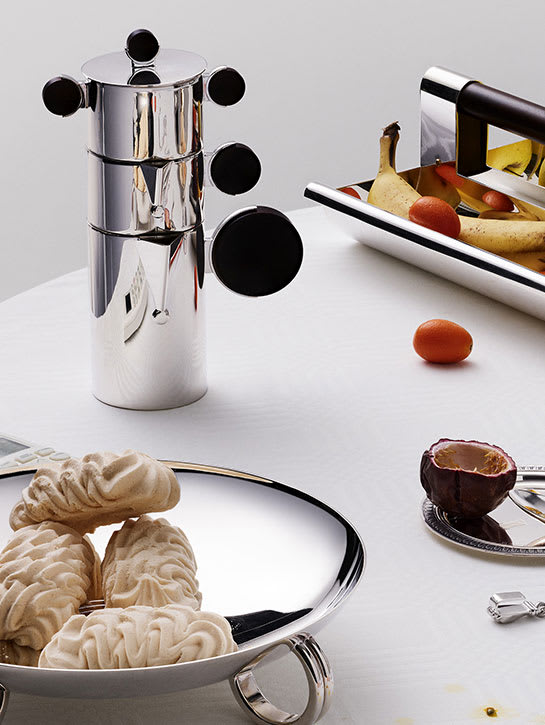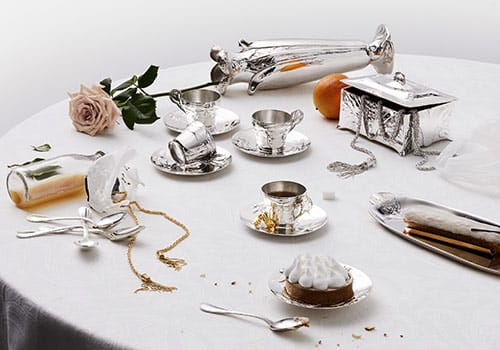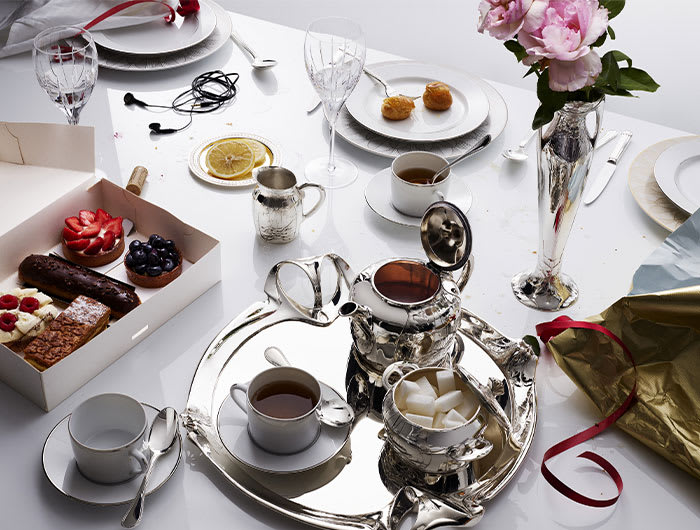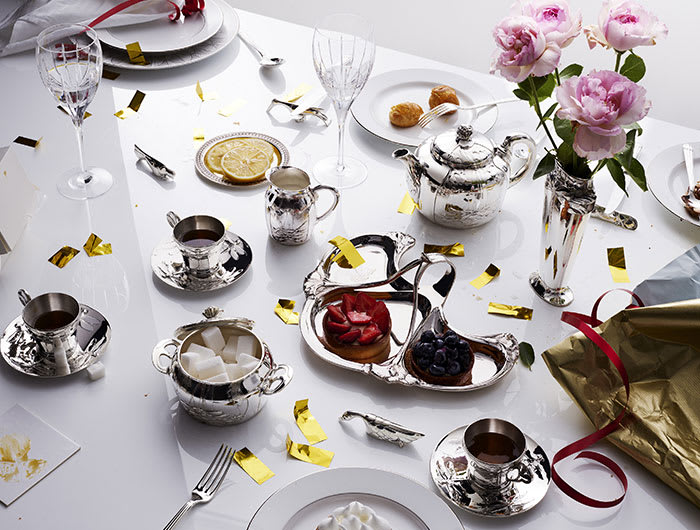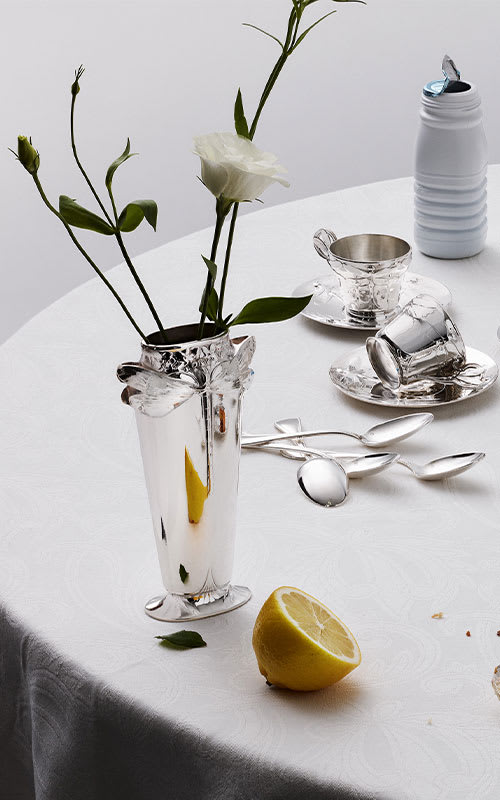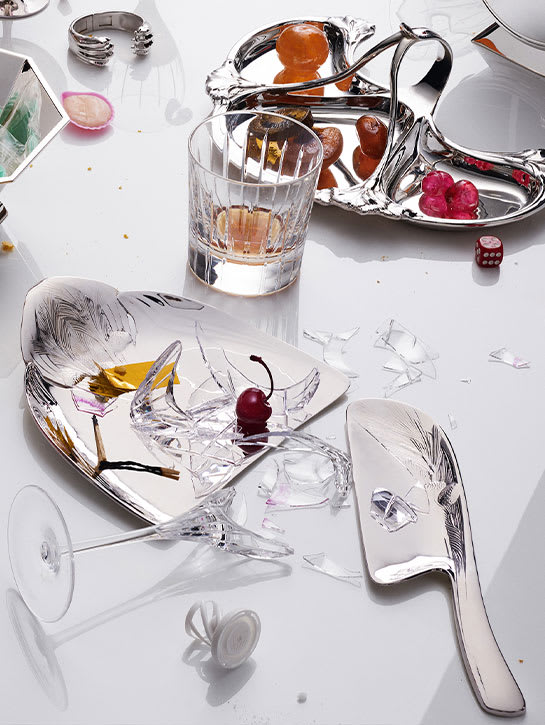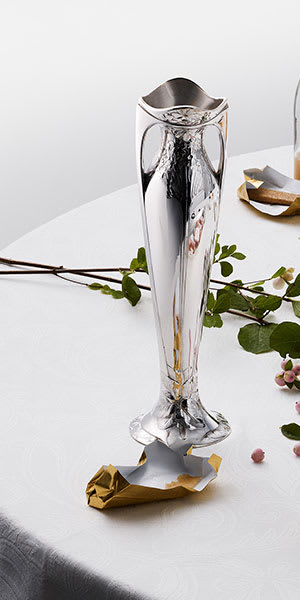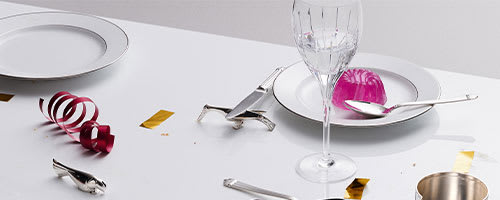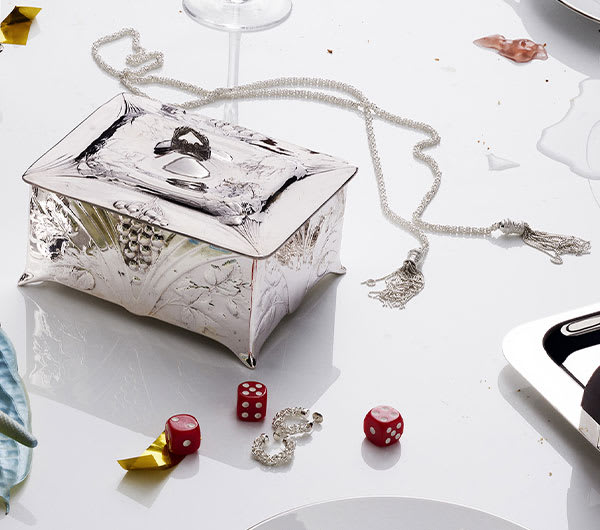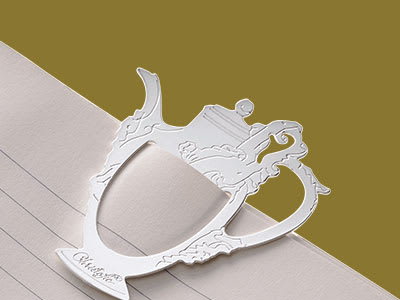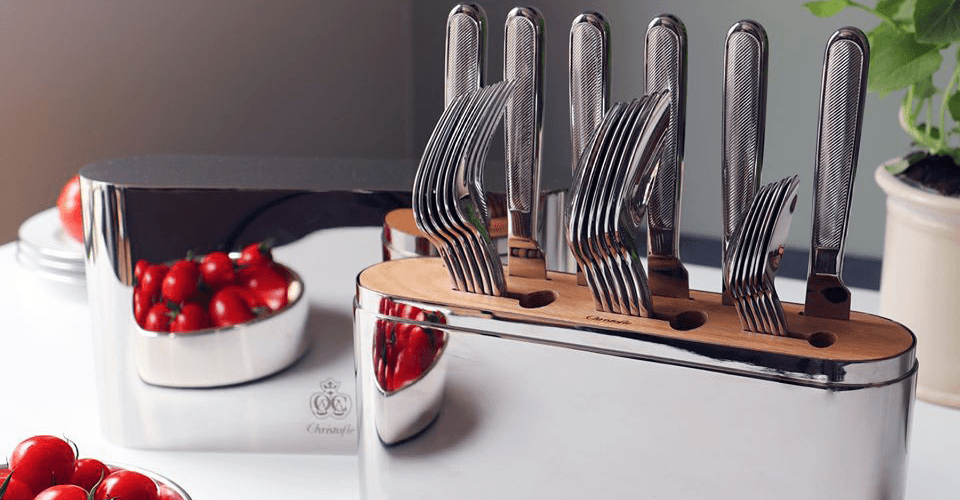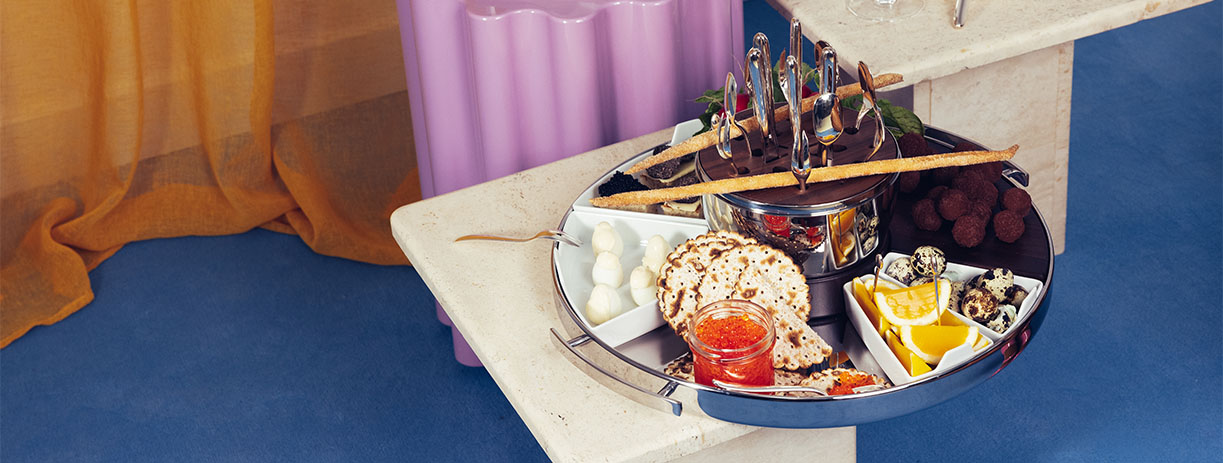Gallia
Created at the turn of the 20th century, at the time of the famous 1900 Paris Exposition,
the Gallia collection takes its name from a tin alloy of enormous importance in its time.
With its name harkening back to "Gaul" and the Gallic rooster as its mark and symbol, Gallia metal put the spotlight on French innovation once more.
This alloy was a milestone in Christofle's history. Making for high-quality, hard-wearing tableware, Gallia metal had the advantage of being robust and lasting longer. It could also be melted into steel moulds instead of being hammered into shape.
Gallia metal quickly became a springboard of ideas for Christofle. Collections were produced in bold, modern styles at a time when tableware and the decorative arts in general had been proposing the same Louis XVI, 18th and 19th century motifs in a loop since 1850.

This was the rise of Art Nouveau, which focused on Nature – or a stylised version of it. Following this, the 20th century saw an explosion of new styles, from Art Deco to Modernism.
The Gallia collection gave Christofle's master silversmiths the opportunity to experiment. As early as 1900, collaborations with extraordinary artists and designers under the Gallia name and Christofle's aegis made the rooster a symbol of the avant-garde movement – and so it would remain for a century.
SYCOMORE
The spectacular Sycamore tea service designed by Christofle in 1904 consists of a teapot, creamer, sugar bowl and tray.
This unique Christofle motif is inspired by the intricate foliage and fruits of the sycamore maple and its distinctive double samaras, whose shape resembles a butterfly's wings. These winged seeds are the main motif of beautifully proportioned Sycamore vase, also designed in 1904.
DRAGONFLY
In Japan, the dragonfly is the symbol of summer and courage. In Asia, it is a good luck charm.
Chosen from the fauna of the garden and preferred to butterflies, birds or snails, the dragonfly is an unreal female figure in its Art Nouveau representation.
The vase was reissued from 2002 to 2004; the bowl from 1998 to 2008.
PINE CONE BREAD SERVICE
Designed in 1903, the Pine Cone bread service consists of a bread basket, a crumb-catcher and a knife. Another decorative style is the Pine Tree Style, a regional variant of Art Nouveau developed in 1900 by Decorative Arts Professor Charles L'Eplattenier of the École des Arts Appliqués in La Chaux-de-Fonds, Switzerland.
THISTLE MAIL TRAY
Reprising one of the iconic motifs of Art Nouveau, the Thistle mail tray presented by Christofle at the 1900 Paris Exposition features this thorny plant. Thistles were the symbol of the Nancy School, from which the style originated (the thistle is also present in the city's coat of arms).
OMBELLE VASE
Wildflowers with geometrical proportions are another natural element typical of this movement and of the Japanese influence:
such as the umbel found on Christofle's long Umbel Vase, created in 1904.
Umbels' long stems end in a bouquet of smaller stems crowned with delicate white flowers.
PRIMROSE VASE
Created by Christofle in 1900, the Japanese Primrose Vase shows the influence on Art Nouveau of the Japanese style, which became very popular at the end of the 19th
Refined, poetic and inspired by Nature, Japanese art fascinated countless artists of this movement with its elongated formats and displays of irregular shapes, elegant lines and asymmetries.
KNIFE-HOLDERS
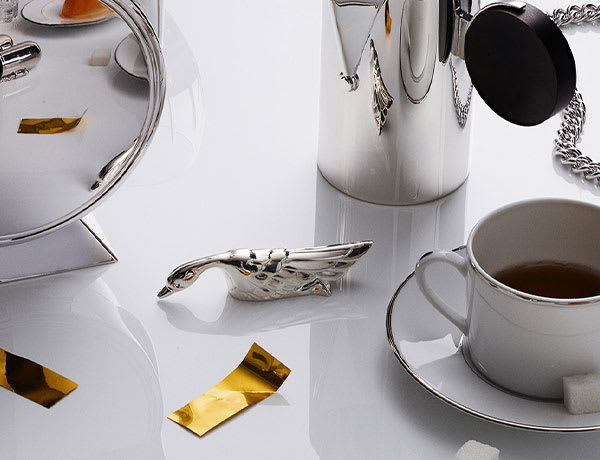
The six knife-holders created in 1928 by Christofle place the focus on the animal world, as interpreted through the vision of artist Eugène Volynkine.
Originally from a collection of twelve pieces, these knife-holders come as a set, in the stylised and elongated shapes of six animals: a pelican, a swan, a dog, a cat, a dove and a peacock.
Paris-based Ukrainian sculptor was known for his extremely angular, radical, sleek and practical depictions of animals, which eclipsed the typical volutes of Art Nouveau.
This Modernist style from Germany based on geometry and everyday ease-of-use revolutionised the world of design.
REDCURRANT JEWELRY BOX
In much the same manner—with fruit, this time—redcurrants are an emblem of the Lorraine region. A redcurrant motif adorns the Redcurrant jewelry box created by Christofle in 1900. Clusters of berries are featured at the centre of a V-shape framed with intertwined leaves.
BOOKMARKS
The 1925 bookmark: a depiction of the iconic carafe from Christofle's 1925 Service. A minimalist object that perfectly embodies the simplicity and geometry of Art Deco.
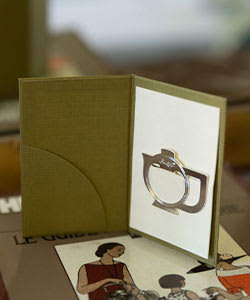
The Carrier-Belleuse bookmark: a depiction of the "Success Through Unity" Coffee Pot designed in 1880 by the famous sculptor Albert-Ernest Carrier-Belleuse. A key figure in the 19th century renewal of Decorative Arts, he benefited from the trust and support of Emperor Napoleon III throughout his career.
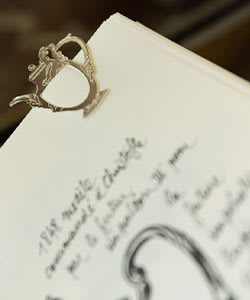
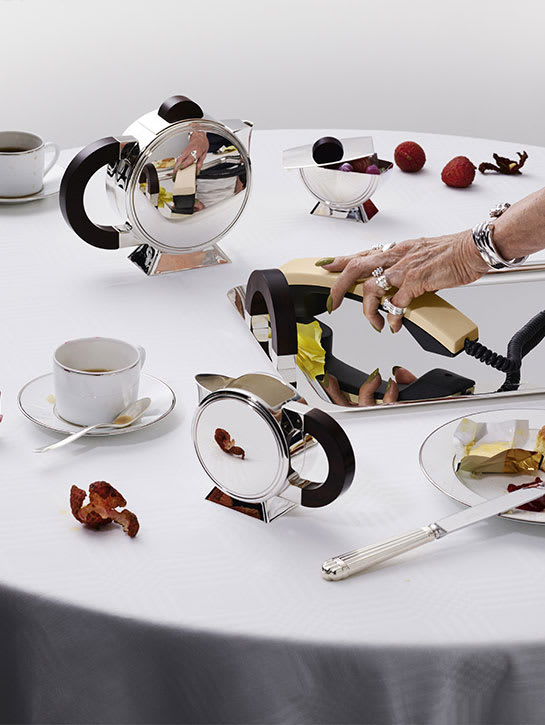
LA COLLECTION FJERDINGSTAD
Christofle reissues for the first time a selection of exceptional pieces created by Christian Fjerdingstad including a great design classic the trundle coffee pot (1926), but also the coffee service "1925".
